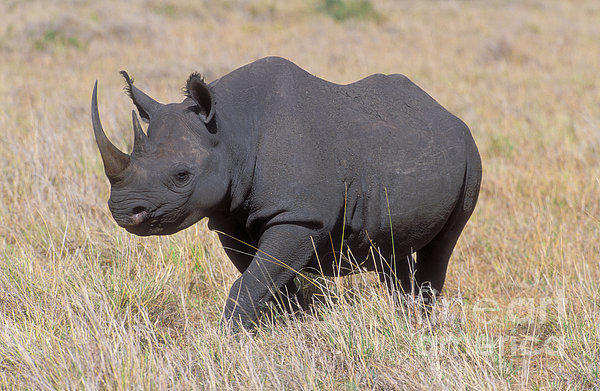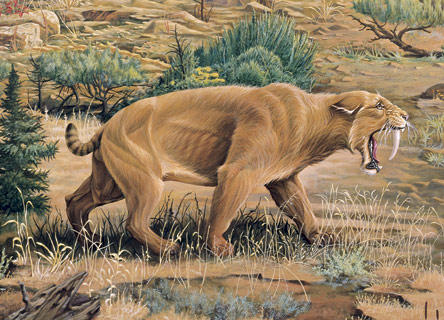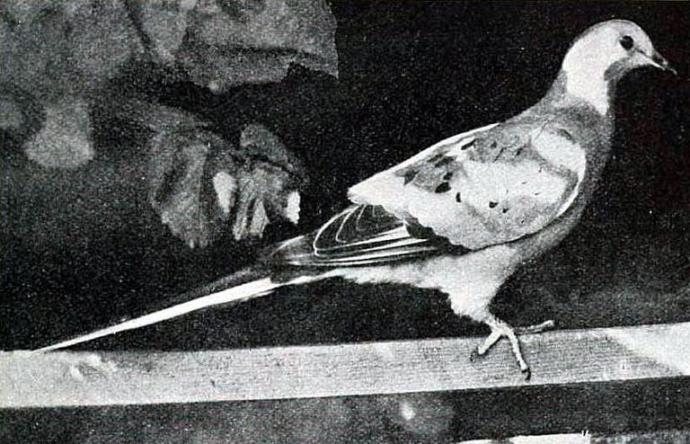Quagga

The Quagga was a subspecies of the common plains zebra and a native of South Africa. Known for its unique stripes, the Quagga was hunted for its hide and killed by ranchers who believed the animals competed with livestock for grazing area. The last known Quagga died at the Amsterdam Zoo in 1883.
West African Black Rhinoceros

The West African Black Rhinoceros was found in several countries towards the southeast region of Africa. Being 3 to 3.8 metres (9.8 to 12.5 ft) long and 1.4 to 1.7 metres (4.6 to 5.6 ft) in height, this rhino weighed 800 to 1,300 kg (1763.7 to 2866 lb). It had two horns, measuring between 50 to 130 cm (19 to 51 inches) and 2 to 55cm (0.7 to 21.6 inches).
Some believe their horns had medicinal properties which lead to heavy poaching. In the 1930’s preservation action was taken to protect the species, but the numbers continued to decline. The last West African Black Rhino was seen in Cameroon in 2006. The West African Black Rhinocero was declared officially extinct in 2011.
Tasmanian Tiger

Know as Tasmanian tigers due to their stripes, Thylacines were the largest modern carnivorous marsupial according to the Smithsonian Institution. They once existed across the Australian continent, but their habitat had been reduced to the island of Tasmania by the time European settlers arrived.
Thylacines were believed to kill livestock and were often trapped and shot for it. They were a used as a scapegoat for poor financial returns and high stock losses at a time of rural depression in Tasmania. Thylacines were declared a protected species in 1936, the same year the last known specimen died. Unconfirmed sightings of Tasmanian tigers continue to this day.
Moa

1,000 years ago moas inhabited the islands of New Zealand. There were more than a dozen species of moa and the largest of these may have weighed more than 200 kilograms (441 lb) and stood 2 to 3 meters (6.5 to 9.8 ft) high. The different species of moa probably became extinct at different times, although little is actually known about this because the archaeological record is limited.
Moas developed on isolated islands with limited contact with mammals and other land dwelling vertebrates. Human beings did not colonize New Zealand until about 1,000 years ago when the first Polynesians arrived. The Maori hunted the moa to extinction and it seems unlikely that any of the species survived into the time of the first contact with Europeans in 1770.
Saber-Toothed Tiger

Sabre-toothed Tigers existed around 55 million to 11,700 years ago. Some species of Sabre-tooth Tigers had teeth that grew up to 50 cm (19.5 inches) long and could open their jaws at an angle of 120 degrees. They were bear-like in build and were believed to be excellent hunters; hunting animals such as sloths and mammoths. It is believed the Sabre-tooth Cat’s extinction may be linked to the decline and extinction of the large herbivores they hunted, climate change, competition with humans or a combination of the three.
Passenger Pigeon

Native to North America, the Passenger Pigeon has been extinct since the early 20th century. It is estimated that between 3 and 5 billion Passenger Pigeons inhabited the US when Europeans arrived in North America, but their settlement led to mass deforestation and excessive hunting which resulted in habitat loss and a reduction in the bird population. The Passenger Pigeon died out in the wild by around 1900, with the last known individual dying in captivity in 1914.
 Holidays
Holidays  Girl's Behavior
Girl's Behavior  Guy's Behavior
Guy's Behavior  Flirting
Flirting  Dating
Dating  Relationships
Relationships  Fashion & Beauty
Fashion & Beauty  Health & Fitness
Health & Fitness  Marriage & Weddings
Marriage & Weddings  Shopping & Gifts
Shopping & Gifts  Technology & Internet
Technology & Internet  Break Up & Divorce
Break Up & Divorce  Education & Career
Education & Career  Entertainment & Arts
Entertainment & Arts  Family & Friends
Family & Friends  Food & Beverage
Food & Beverage  Hobbies & Leisure
Hobbies & Leisure  Other
Other  Religion & Spirituality
Religion & Spirituality  Society & Politics
Society & Politics  Sports
Sports  Travel
Travel  Trending & News
Trending & News
Most Helpful Opinions